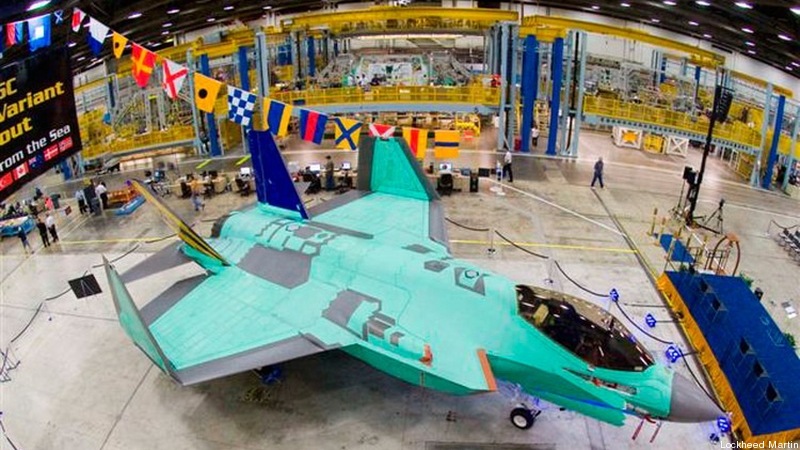 WASHINGTON: Lockheed and the government made it official today, signing the $4.7 billion eighth Low Rate Initial Production contract for the F-35.
WASHINGTON: Lockheed and the government made it official today, signing the $4.7 billion eighth Low Rate Initial Production contract for the F-35.
Here’s the full price and the official language: “Lockheed Martin Corp., Lockheed Martin Aeronautics Co., Fort Worth, Texas, is being awarded a $4,123,746,486 modification to a previously awarded fixed-price-incentive firm-target contract (N00019-13-C-0008) for the production of 43 Low Rate Initial Production (LRIP) Lot VIII F-35 Lightning II aircraft. The contract includes $500 million for advance procurement.”
As Breaking D readers already know, this pays for 43 airframes: 29 for the United States and 14 for five international countries. The average cost per airframe (engines are a separate contract) costs are roughly “3.5 percent lower than the LRIP 7 contract signed in 2013 and a 57 percent reduction since LRIP 1,” according to a Joint Program Office statement.
The airframe prices (read the headline) should be read in light of the bold pledge made last Decemberby the general manager for the JSF, Lorraine Martin. She said that by 2019, the F-35A (the Air Force version) will cost $75 million a copy in current dollars ($85 million in good ole then-year dollars, i.e. counting future inflation), which will be “less than any fourth generation fighter in the world.”
The breakdown of the US buy is: 19 F-35As for the Air Force; six F-35Bs for the Marines and four F-35Cs for the Navy. Israel gets it first two F-35As and Japan gets it first four. Norway gets another two F-35As and Italy gets two. The Brits get four F-35Bs. First deliveries come in early spring next year. After they are all delivered eight countries will be flying 200 F-35s.
The government released a few contract details. Lockheed covers 100 percent of any cost overruns and the two parties will share any cost savings cost — 20 percent for the government and 80 percent for Lockheed. Any concurrent problems in the System Development and Demonstration buy and they share these 50-50. New problems discovered in LRIP 8 “will be authorized via engineering change proposals.”
Also, Lockheed gets paid incrementally it achieves specified performance criteria.
Navy jet trainer fleet operations remain paused after engine mishap
One week after the incident, a Navy spokesperson says the service is continuing to assess the fleet’s ability to safely resume flight.



























